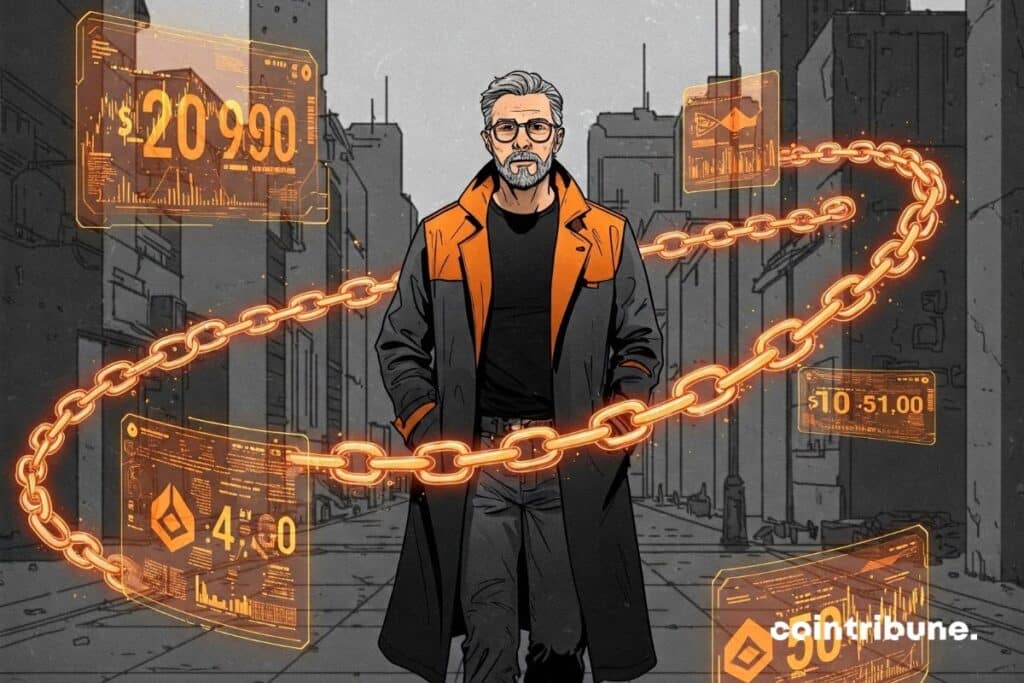The Post-Quantum Decentralized Revolution – The Next Crypto Trend You Can’t Afford to Miss
With the rapid advancements in quantum computing, the threat to traditional crypto systems is now an undeniable reality. The so-called “Q-Day”—the day when quantum computers become powerful enough to break current cryptographic systems—is no longer a distant possibility. For the crypto world, this moment represents an existential threat. How can we prepare for this looming danger? The answer: Naoris Protocol, a cutting-edge solution designed to secure blockchain and Web3 technologies against the post-quantum future.

What Does “Post-Quantum” Mean And Why Is It Important?
Quantum computing is a technological breakthrough that will reshape modern technology. Quantum computers have the potential to break widely used cryptographic protocols like RSA and elliptic curve cryptography (ECC), which secure everything from internet communications to crypto transactions. Once quantum computers reach sufficient computational power, they will be able to crack these systems with ease, jeopardizing sensitive data.
In the crypto and blockchain world, the implications would be profound. Quantum computers could instantly recover private keys, decrypt past encrypted communications, and even forge crypto transactions—undermining trust in validation systems. To counter this threat, it’s crucial to prepare for a future where quantum security becomes the norm.
The Naoris Protocol Solution: A Decentralized Post-Quantum Infrastructure
Naoris Protocol positions itself as the answer to this growing threat. It offers a Decentralized Post-Quantum Infrastructure that protects blockchain transactions and Web3/Web2 physical infrastructure from quantum computer attacks. Operating at the Sub-Zero Layer, beneath L0 to L3 blockchain layers, it acts as the trust and security fabric for Web3 and the modern internet and is designed to withstand Q-Day without requiring major modifications to existing networks.
Sub-Zero Layer: The Foundation of the Future
This Sub-Zero Layer provides enhanced security without the need for disruptive “hard forks,” which can compromise network integrity. It’s fully compatible with EVM (Ethereum Virtual Machine) networks, integrating smart contracts and security nodes to ensure total resilience against quantum attacks.
Using NIST-standardized post-quantum algorithms like Dilithium-5 and KEMs, Naoris Protocol delivers maximum transaction security—even in the face of quantum computers. Its key innovation lies in its ability to integrate post-quantum protection seamlessly, without disrupting the operation of existing blockchain networks.
The 3 Core Areas of Post-Quantum Protection
1. Blockchain Transactions Secured Against Quantum Threats
Naoris Protocol offers a Decentralized Post-Quantum Infrastructure through the Sub-Zero Layer, enabling EVM-compatible blockchain transactions to become quantum-secure—without the need for hard forks or disruptive network changes. By integrating the Dilithium-5 algorithm, Naoris ensures blockchain transactions are protected from future attacks.
2. Web3 Physical Infrastructure Secured Against Quantum Threats
The Sub-Zero Layer decentralizes trust in Web2 components used by Web3. Each node, DEX, bridge, and validator is secured within a real-time immutable mesh network. This eliminates vulnerability risks and ensures that Web3 infrastructure is ready to withstand quantum computer attacks.
3. Web2 Physical Infrastructure Secured Against Quantum Threats
Through its dPoSec consensus and Swarm AI, every server, IoT device, and data center is transformed into a cyber-secure validator “node” to create a ‘security hive mind’ that validates the health of every other participating device in real time eliminating single points of failure. This approach guarantees that even traditional Web2 infrastructures—often overlooked in blockchain security—are protected against post-quantum threats.
The Upcoming TGE (Token Generation Event)
Naoris Protocol’s Token Generation Event (TGE) is fast approaching—a crucial milestone for deploying this revolutionary technology. The TGE presents an opportunity to take part in a pioneering project in the field of post-quantum security, a rapidly growing space with increasing institutional interest.
Key Dates:
- Whitelist: Open now
- TGE: In the coming weeks
Why Participate?
- Be part of a major post-quantum security narrative, increasingly relevant to the future of crypto.
- Join a crypto trend that is gaining strong institutional momentum.
How to Participate?
Sign up for the whitelist now on the official Naoris Protocol website.
Join Naoris Protocol in a few simple steps to take part in this Token Generation Event.
In a Nutshell: What Is Naoris Protocol?
Naoris Protocol offers a powerful, ready-to-deploy post-quantum solution for blockchain transactions, Web3, and Web2 infrastructure. By joining this innovative initiative, you contribute to shaping the future of digital security in a world increasingly vulnerable to quantum threats.
Summary of Benefits:
- Post-quantum security, without complex infrastructure changes
- Decentralized architecture securing blockchain transactions and physical Web3/Web2 infrastructure
- A ready-to-deploy solution with full EVM compatibility
Naoris Protocol is now positioned as the go-to solution to protect blockchain and Web3 networks from post-quantum threats. Join this technological revolution today—be at the forefront of digital security by participating in the TGE and registering your project on the whitelist now.
Maximize your Cointribune experience with our "Read to Earn" program! For every article you read, earn points and access exclusive rewards. Sign up now and start earning benefits.
The Cointribune editorial team unites its voices to address topics related to cryptocurrencies, investment, the metaverse, and NFTs, while striving to answer your questions as best as possible.
The contents and products mentioned on this page are in no way approved by Cointribune and should not be interpreted as falling under its responsibility.
Cointribune strives to communicate all useful information to readers, but cannot guarantee its accuracy and completeness. We invite readers to do their research before taking any action related to the company and to take full responsibility for their decisions. This article should not be considered as investment advice, an offer, or an invitation to purchase any products or services.
Investment in digital financial assets carries risks.
Read more